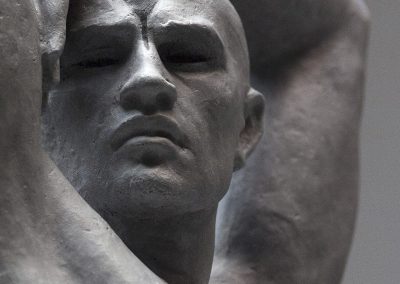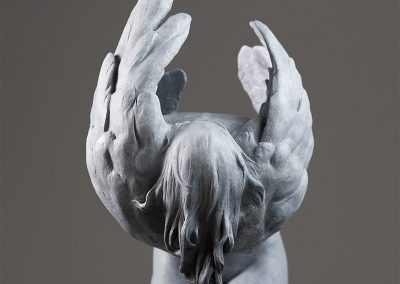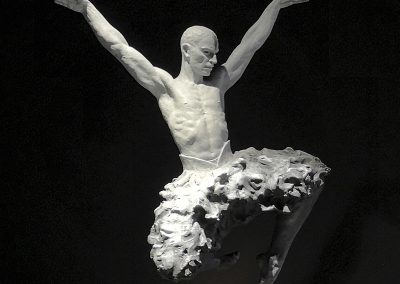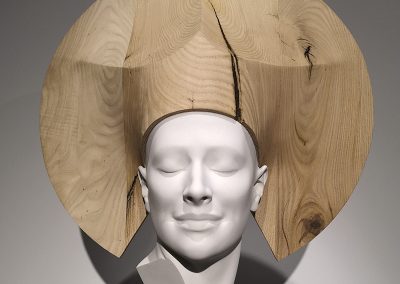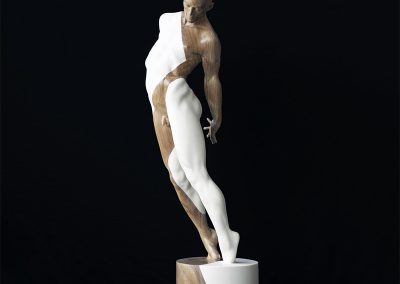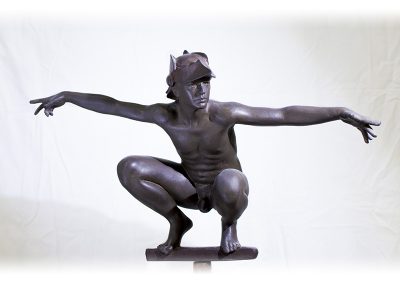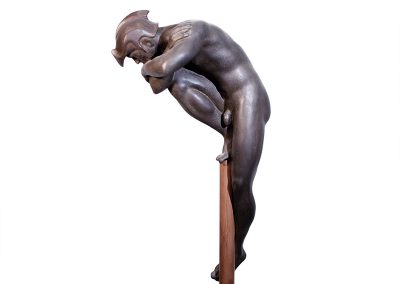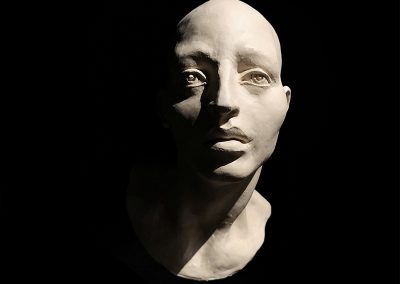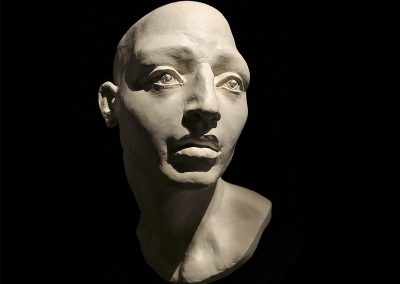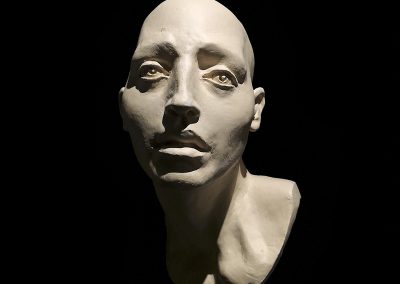The Beauty Offered
Magical realism
Sculpture
From September 27 to October 31, 2018
Curator: Zvonimir Kremenić & Juan Ramón Martín
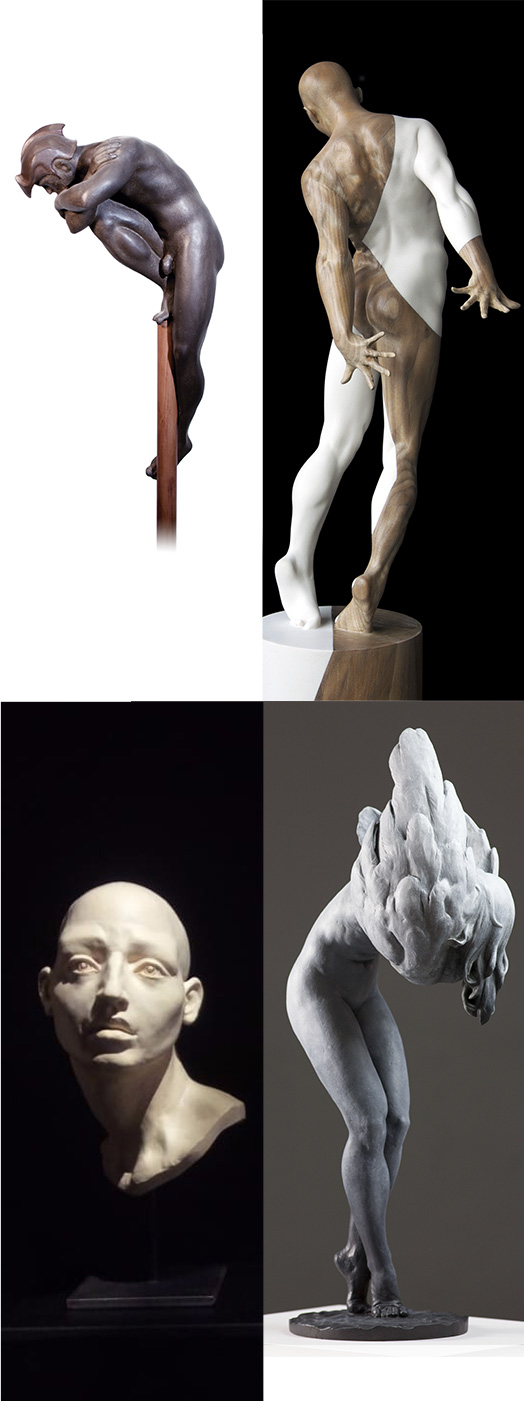
We could title the sculpture exhibition that Espacio Primavera offers in many ways: “The influence of light”, “Constructed matter”, “Representation and enigma”, or as Huberman would say: “Being a sculpture”. All these concepts are handled with great authority by the authors that this sample gathers. The sculptures presented by EP9 direct the viewer’s contemplation towards a slightly voluptuous interior that catches their gaze and immediately becomes captivated by them. They act as a motor of thought creating an expansive wave that feeds the pleasure of the senses. Perhaps the title “Beauty” fits more precisely as it approaches the inexhaustible source of aesthetic fact. We have finally decided to round off our title as “The Beauty Offered”.
Each of the pieces that make up this show is presented to us with a powerful vocation of seduction. As if it were an eros dart, that’s how they act. It is they, the sculptures, who look at us offering us their beauty, generous, for our pleasure. They stand in the room with the presence and power of a truth that the viewer feels to be true. There is in all of them, in addition to an unquestionable execution, a great sincerity. They come to give us images that amplify our inner fantasy world. In all of them Beauty hangs by a thread of fervor, that which offers itself to contemplation for pure pleasure. Beauty that is placed before us as a mystery of life and whose ultimate reason leads us to joy.
The light on the sculptures acts in a subtle way; the gaze is caught by the object; it acts and transcends, and leads the imagination that overflows into new territories creating a new reality of pleasure and seduction.
Well-constructed, modeled, or carved forms; patinated or smoothly polychrome surfaces; a set of sculptures made with the love of the artisan that he executes with the most refined technique, but assisted by the genius of the artist who knows how to tell stories.
Juan Ramon Martin
Coderch y Malavia
Cesar Orrico
Ernesto Amadeo Schlieper
José Manuel Belmonte
From September 27 to October 31, 2018
Curator: Zvonimir Kremenić & Juan Ramón Martín
Coderch & Malavia
The figurative work of Coderch and Malavia follows the tradition of the great European sculptors. If we were to draw a line of time we would meet its natural predecessors; Maillol, Rodin, Marini, Bourdelle.
Classical dance, myths and literature are the sources to Coderch and Malavia, which are embodied in the human figure as a pretext for representing beauty. The material they use is bronze.
The center of his aesthetic discourse is the human being. They start from natural models. The sculptural pieces are shown not only as a figurative result, but as an exploration of different human attitudes towards life. Classical beauty underlines the aesthetic discourse. Becoming this which has awarded them the 52nd Reina Sofía Prize for Painting and Sculpture 2017.
César Orrico
Sensuality and anatomy is the binomial, pure balance, that definen Orrico’s work. Carving, modeling and casting are the techniques with which this sculptor expresses himself. His works usually present more than one material that combines and emphasizes the form, and that enriches its semantic content.
The anatomical and descriptive drawing is present in all his work that seduces from the first glance.
In the proportion and movement of his works he reinterprets the classical and baroque canons. His work has echoes of the sculpture of Skopas and Bernini but also of the goldsmithing of silversmiths and artisans who have a good execution at the center of their work.
José Manuel Belmonte
The man in defiant attitude, the desire to fly bird, the epic attitude, the Greeks and the battles, the anatomy of the soul. Generation and form and a clear target, Beauty.…
Belmonte is a sculptor of fine and precise modeling, and of concentrated plastic attitude; follows in the wake of great figures of deep Spanish roots: Benlliure, Querol, Blay, Llimogna, Ricardo Bellver, Eduardo Barrón, Mateo Inurria, etc. All of them belong to a genealogy that, without a doubt, is evident in the work of this author.
Ernesto Amadeo Schlieper
The artist is not the author of his work, he only acts as a medium between them and whoever contemplates them, says Schlieper. The beauty in sculpture is reflected in the works where the artist projects universal forces; This concept is known in Chinese culture as CHI: the “vital flow of energy.” This conception does not respond to aesthetics or specific styles, but rather transcends forms and is behind what is legible, it is something energetic and magical. It is what makes art the most complex and sublime discipline. That is why beauty does not only dwell in beauty; It can be disturbing, uplifting, inspiring, or chilling.

